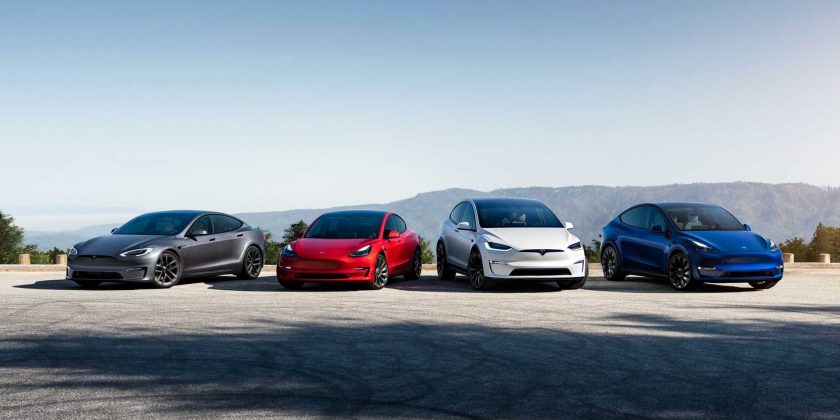The average price paid for a new electric vehicle in the US decreased in December by $3,594 compared to November, according to Kelley Blue Book’s latest average transaction price (ATP) report.
According to KBB estimates, the average new EV sold for $61,448 in December, a significant decrease of 5.5 percent over November’s $65,042 average EV transaction price. Compared to December 2021, the average price paid for a new EV dropped by only 0.6 percent in December 2022.
The drop in EV pricing was mainly driven by significant price cuts at Tesla as part of a year-end sales push, as the EV maker commands more than 65 percent of the electric vehicle segment. Earlier in the year, Tesla was raising prices, citing supply issues; in December, the company reversed course.
Despite the lower average transaction price, the average new EV sold for a significantly higher price than the average new vehicle (overall) in the US, estimated by KBB at $49,507 in December 2022. The average EV was also more expensive than the average non-luxury vehicle ($45,578) and average truck ($59,000). Only the average luxury vehicle had a higher ATP than EVs – $66,660.
Gallery: 2021 Tesla Model Y
According to Kelley Blue Book calculations, new-vehicle ATPs have been above the average manufacturer’s suggested retail price (MSRP), for more than a year. Prices remain elevated despite the fact that new-vehicle inventory levels are increasing from historic lows earlier in 2022.
Kelley Blue Book also notes that incentives increased last month to 2.7 percent of the average transaction price, compared to 2.2 percent in November. In December 2021, incentives averaged 3.8 percent of ATP, while in December 2019, before the pandemic and when inventory was plentiful, the average incentive package was 10.9 percent of ATP.
Unsurprisingly, EVs had the highest incentives in December at 6.2 percent of ATP – again influenced by changes at Tesla – with luxury cars a close second at 5.8 percent of ATP.
“Incentives overall are still very low but trending upwards. Electric vehicles and luxury cars had incentives close to 6% of ATP, and both saw ATP decline in December as a result. Plus, with the new tax credits on the way, electric vehicle ATPs will drop lower for qualifying vehicles.”
Rebecca Rydzewski, research manager of economic and industry insights for Cox Automotive
The lowest incentives were seen by vans, minivans and full-size SUVs, all less than 1 percent of ATP.
- Share on Facebook
- Share on Twitter
- Share on LinkedIn
- Share on Flipboard
- Share on Reddit
- Share on WhatsApp
- Send to email
Source: Read Full Article


